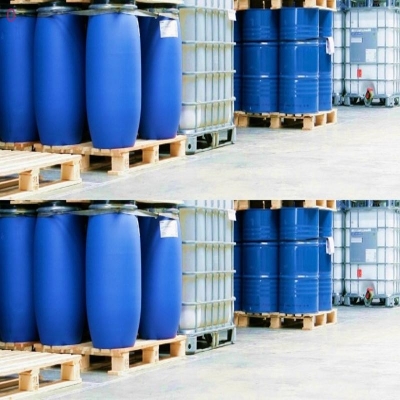-
Categories
-
Pharmaceutical Intermediates
-
Active Pharmaceutical Ingredients
-
Food Additives
- Industrial Coatings
- Agrochemicals
- Dyes and Pigments
- Surfactant
- Flavors and Fragrances
- Chemical Reagents
- Catalyst and Auxiliary
- Natural Products
- Inorganic Chemistry
-
Organic Chemistry
-
Biochemical Engineering
- Analytical Chemistry
- Cosmetic Ingredient
-
Pharmaceutical Intermediates
Promotion
ECHEMI Mall
Wholesale
Weekly Price
Exhibition
News
-
Trade Service
As a highly flexible low-carbon energy source, hydropower is the world’s largest clean energy source with the largest installed capacity.
However, new hydropower projects worldwide are currently facing multiple challenges such as difficult approvals and high construction requirements
.
According to the IEA, in order to achieve the climate goal of net zero emissions, governments should solve the “stumbling block” problem faced by the hydropower industry as soon as possible.
"Compared with the past 10 years, by 2030, the global newly installed hydropower capacity is expected to shrink by about 25%
.
The slowdown in hydropower installed capacity is likely to drag the world's climate goals
"The Forgotten Giant"
IEA pointed out in the report that hydropower is not only a clean energy that has been maturely applied, but also a highly flexible energy storage system
.
Compared with nuclear power, coal power and even natural gas power generation, hydropower can regulate power production more quickly.
In the future, when wind power, photovoltaic and other intermittent power sources are used on a large scale in the future, hydropower will be a good peak-shaving energy source
Data show that in 2020, about 1/6 of the global electricity supply will come from hydropower
.
Hydropower is currently the world's highest proportion of clean energy, and its proportion is even higher than that of photovoltaics, wind power and other clean energy generation combined
However, judging from the current energy policies formulated by various countries, in the next 10 years, the total global installed capacity of hydropower is expected to rise by about 17%, and the total newly installed capacity will shrink by about 25% compared with the previous 10 years
.
Analysis believes that new hydropower projects often face challenges such as long construction periods, cumbersome approval procedures, high environmental assessment costs, and even local residents’ opposition.
These factors have greatly weakened the competitiveness of hydropower compared with other energy sources
IEA Director Birol pointed out in a statement: “Hydropower is the most often overlooked'giant' of clean power
.
If countries around the world hope to achieve climate goals as scheduled, governments should include hydropower as soon as possible into the energy and climate agenda.
In
The IEA pointed out in the report that there are usually three types of hydropower: reservoir power generation, construction of power stations on rivers or pumped storage power stations.
From the current situation, about half of the global hydropower resources with economic development potential have not yet been developed
China leads global hydropower development
According to the report, in the next 10 years, the new installed capacity of global hydropower will mainly come from countries such as China, India, Turkey and Ethiopia
.
In the view of IEA, hydropower is particularly important for the economic development of developing countries
It is particularly noteworthy that the data compiled by the IEA shows that between 2001 and 2010, China's newly installed hydropower accounted for about 60% of the world's total newly installed hydropower
.
IEA believes that in the next 10 years, China will maintain its position as the world's largest hydropower market, and China's new hydropower installed capacity is expected to account for about 40% of the world's total new installed capacity
.
On June 28 this year, the first batch of units of China's Baihetan Hydropower Station was put into operation, and it is currently the world's largest single-unit capacity and second-largest hydropower station in terms of installed capacity
.
At the same time, IEA also pointed out that Southeast Asian countries and African countries will also be the main drivers of global hydropower installed capacity growth
.
At present, Laos, Nepal and other countries are actively preparing for the construction of hydropower projects, and it is expected that electricity exports will be realized in the future
.
In addition, some African countries south of the Sahara Desert are also building hydropower facilities
.
From the perspective of local water resources, the growth rate of hydropower installed capacity in sub-Saharan Africa will also be very impressive
.
Take the Inga Hydropower Project in the Democratic Republic of the Congo as an example.
The power station has now completed the first and second phases of construction.
Once all the projects are completed, the installed capacity of the hydropower station is expected to reach 40 GW
.
Market research firm Wood Mackenzie commented that this can more than double the total installed capacity of hydropower in Africa in one fell swoop, which is very helpful to Africa's energy low-carbon transition
.
According to data compiled by the IEA, in 2020, hydropower will account for about 17% of Europe’s electricity supply; it is estimated that by 2030, the installed capacity of hydropower in Europe will increase by 18 GW, a reduction of about 40% from the newly added capacity in the previous 10 years.
The growth rate is lower than the global average
.
The rise of hydropower is more challenging
IEA analysis pointed out that, for many developed economies, problems such as the aging and disrepair of hydropower plant equipment are a major challenge facing the growth of hydropower installed capacity in the future
.
The report data shows that the average operating life of hydropower stations in North America has exceeded 50 years, and most hydropower facilities in Europe have been in operation for more than 45 years
.
According to data compiled by IEA, developed economies are expected to spend US$127 billion on refurbishing old hydropower stations from 2021 to 2030, but this value is far from sufficient to realize the potential of old hydropower stations.
For a thorough transformation, advanced economies should increase their investment quota to at least US$300 billion
.
It is worth noting that the IEA also reminded that the hydropower industry should also be alert to the negative impact of climate change
.
In recent decades, the annual rainfall in Europe has changed.
The northern part of Europe has become relatively humid, while the rainfall in the southern area has decreased
.
In southern European countries such as Portugal, Turkey, and Italy, its hydropower plants are likely to experience a decline in production capacity due to climate change
.
In the United States, California and other Midwestern regions have also encountered unprecedented continuous dry weather this year.
This has directly caused the water levels of many reservoirs in the region to drop to historical lows, and hydropower production capacity has also been severely reduced
.
The industry believes that the energy industry should pay special attention to the phenomenon that the decline in hydropower production capacity has pushed up fossil energy consumption
.
The report recommends that governments around the world should solve the major challenges facing the hydropower industry as soon as possible, reverse the slowdown in new hydropower installations, and show the long-term profitability of hydropower projects to the industry, ensure the feasibility of their investment, and formulate reasonable sustainability Industry standards
.
The IEA predicts that if governments can solve the challenges faced by hydropower projects as soon as possible, by 2030, the global new installed capacity of hydropower will increase by more than 40%
.
(Reporter Li Limin)
Transfer from: China Energy News







